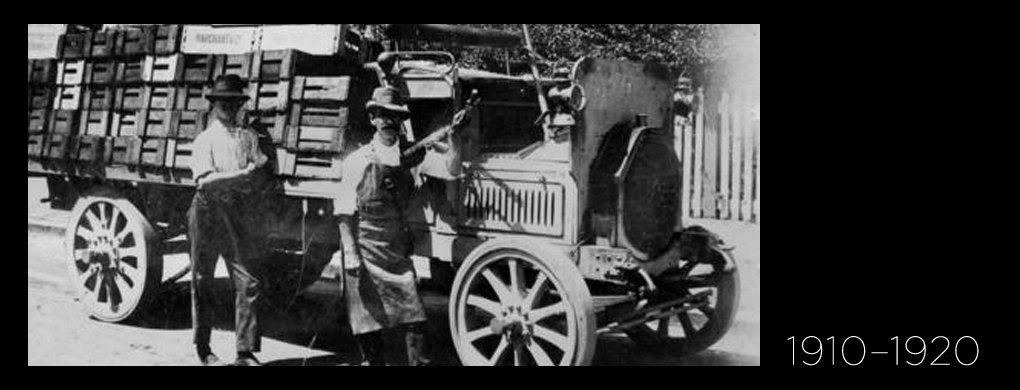Melbourne Polytechnic in the 1910s
 A century of Technical and Vocational education in the northern suburbs of Melbourne was heralded by the ringing of a cowbell throughout the tough streets of Collingwood in the winter of 1912.
A century of Technical and Vocational education in the northern suburbs of Melbourne was heralded by the ringing of a cowbell throughout the tough streets of Collingwood in the winter of 1912.
Although Collingwood Technical School was officially opened on 30 July 1912, an enterprising new principal, Mathew Richmond, had taken to this unusual form of recruitment (VTAC was some years away).
Richmond used the bell to attract the attention of local boys who, up until this time, spent most of their days hanging around Collingwood’s street corners. He offered to teach them mathematics, trade drawing and practice and eight or so of these ‘larrikins’ took Richmond up on his offer and became the first students of Technical School No. 22.
Collingwood Technical School was part of a move by newly formed State Governments to assume control and improve the standard of Vocational Education and Training.
In Victoria, this responsibility of government was further formalised by the passing of the Education Act 1910.
Collingwood Technical School was to be a flagship for educational innovation in Victoria as it was the first Victorian Education Department school to be modelled on the late nineteenth century German concept of providing pre-vocational education to school-age children plus evening classes for working youth and adults.
In the decade that followed Collingwood Technical School became known for its civilising affects on working class boys and noted for its excellent engineering, science, art and commerce programs. The college also developed alliances with major industries such as the boot making trade and contributed to wider community projects such as the Returned Soldiers Training Scheme.
Student Enrolments
1912 - Within three weeks of commencing in 1912 Collingwood had 57 enrolments for its evening classes.
1913 - 60 students enrol for the first day classes at CTS.
1919 - Collingwood Technical School had 208 secondary and 493 post secondary enrolments.
Rewarding Excellence
In 1917 Collingwood Technical School student, Earnest Clay, was awarded a Grade 2 W.D Beazely Trade Scholarship in Fitting and Turning for which he received £10 and free instruction for 12 months.
In 2010 Heather Newnham won an NMIT study grant, sponsored by Iskander Racing and Breeding, for her excellent performance during her Bachelor of Equine Studies. The $12000 grant allowed her to travel to the United States where she spent five months attending equine related events and completed a short course in Advanced Equine Reproduction. Her trip to the US also led her to apply for an internship at Colorado State University in the reproductive management of mares and stallions which she will commence in January 2012.
Training for the Times
In 1912 Collingwood Technical School offered three-year evening courses in carpentry, plumbing, turning and fitting, bricklaying and plastering. Electrical and mechanical engineering and electrical wiring were added in 1915 and wood machining in 1918.
In 2012 NMIT is accredited to deliver approximately 550 nationally recognised qualifications and over 410 Institute accredited courses across seven faculties including Arts and Social Sciences, Engineering, Business, Earth Sciences, Building and Construction, Further Education and Hospitality and Personal Services.
First day-classes
The first day-classes at Collingwood Technical School started in 1913 and were held in the former Collingwood Town Hall and Court House in Johnson Street, Collingwood.
When Collingwood Technical School first commenced, fees ranged from 3 shillings 6 pence for Grade 1 Boot and Shoe making classes to 12 shillings for a Grade 3 Carpentry course.
The Collingwood Technical School Badge was designed circa 1914 and consisted of a gear wheel enclosing a square, a pair of calipers, an artist's palette and the letters CTS. The badge featured the traditional Collingwood Colours of black and white which also stood for purity (white) and the darkness of ignorance (black).